There are sound arguments in favor of using the 22 LR for self-defense. The small rimfire cartridge produces very little recoil, which makes it easier to fire rapidly and accurately. It is inexpensive enough that you can afford lots of target practice with the same ammo you would fire in self-defense. It also lets you carry around a small handgun. A Taurus 22 Poly weighs a mere 11 ounces, and a considerably better Glock 44 is only 3.5 ounces heavier. So, let’s explore the idea of relying on 22LR to stop a threat and we’ll even toss in some suggestions for the best 22 LR ammo for self-defense you can find out there.
The Downside of 22 LR for Self-Defense
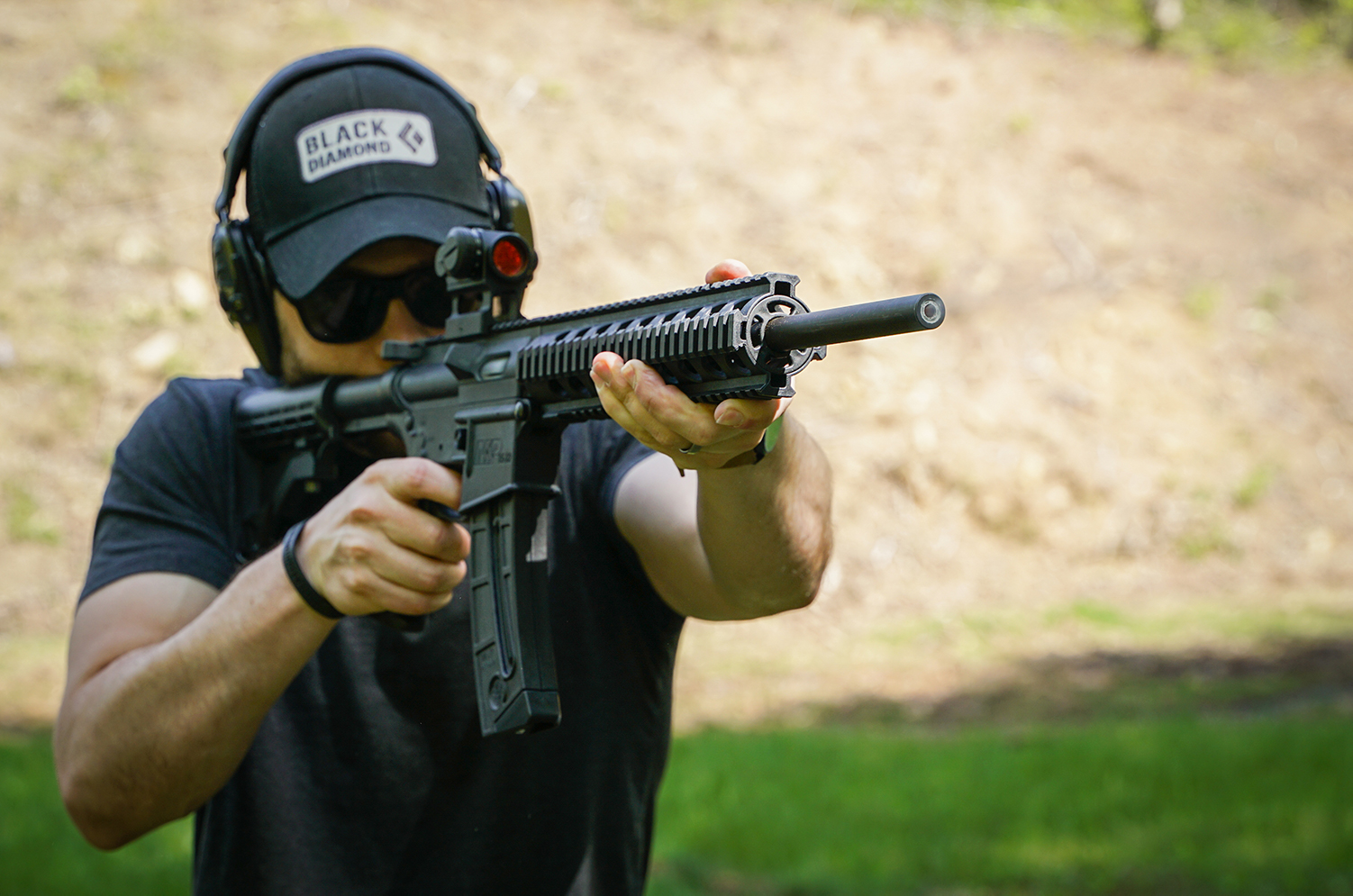
If you’re considering keeping a 22 LR pistol for self-defense for any of the aforementioned reasons, then you must also know the round’s giant downside: It transfers relatively little energy to its target during impact and penetration. In simpler terms, 22 LR ammo has terrible stopping power – and you want good stopping power while you’re contending with someone who means to do you immediate bodily harm.
Low Energy/Low Power
Exactly how poor is the 22 LR’s stopping power? Well, for reference, it is recommended that your self-defense ammo strikes the threat with at least 220 to 300 foot-pounds (ft lbs) of energy. No 22 LR pistol in existence is capable of transferring that much energy to its target, even if the target is pressed right up against its muzzle.
Your own 22 LR ammo might be even weaker than you think. When manufacturers report their 22 LR ammo’s muzzle energy, they almost always provide the data they recorded with a rifle-length test barrel. But if you’re carrying a pistol, its shorter barrel will give propellant gasses less time to transfer their energy to the bullet. When they’re firing the same ammo, a pistol will necessarily deal less damage to its target than a rifle!
When we compare the 22 LR’s muzzle energy to a few other popular self-defense pistol rounds, its glaring disadvantage becomes obvious. While our chart doesn’t show the full range of what these rounds are capable of, it does highlight the 22 LR’s relative weakness.
| Caliber | Muzzle Energy (ft lbs) |
|---|---|
| 22 LR | 91 |
| 38 Special | 264 |
| 9mm | 345 |
| 45 ACP | 358 |
| 40 S&W | 400 |
In summary, the 22 LR can’t neutralize a threat as reliably as any of the larger handgun cartridges. But in its defense, its low recoil does facilitate rapid follow-up shots – an accuracy advantage you may welcome if you miss or fail to neutralize the threat the first few times you shoot them.
Some people claim the 22 LR offers more stopping power than its low energy would suggest, because its bullet can ricochet off bones. The lightweight bullet’s trajectory may indeed deflect off of bones, but this occurrence is too infrequent to reasonably expect during a self-defense scenario.
Accuracy Matters Most
Ultimately, effective self-defense with a 22 LR pistol boils down to good shot placement. The little round is theoretically capable of killing an elephant – provided that it hits the behemoth at the right angle!
Outside of good aim, you also want good 22 LR ammo for self-defense. It won’t turn your pistol into a magnum, but it will make effective use of what little energy the 22 LR can deliver. Good self-defense ammo is also reliable. You don’t want a failure to feed or extract to pop up when your back’s against the wall!
Best 22 LR Ammo for Self-Defense
| 22 LR CCI Stinger 32gr CPHP | 22 LR CCI Mini-Mag 40gr LRN | 22 LR Federal Champion Training 40gr LRN | 22 LR Winchester Super Suppressed 45gr CPRP | |
|---|---|---|---|---|
| Muzzle energy (ft lbs) | 191 | 135 | 137 | 119 |
| Energy @ 25 yds | 150 | 119 | 121 | 111 |
| Energy @ 50 yds | 119 | 106 | 109 | 104 |
| Energy @ 75 yds | 96 | 97 | 99 | 98 |
| Energy @ 100 yds | 81 | 89 | 91 | 93 |
We’re going to recommend some good 22 LR cartridges for self-defense, but our list is not definitive. These examples aren’t the only products you could use for self-defense. If you can’t find any of these specific types of ammo, then something similar should prove serviceable!
CCI Mini-Mag 36gr CPHP
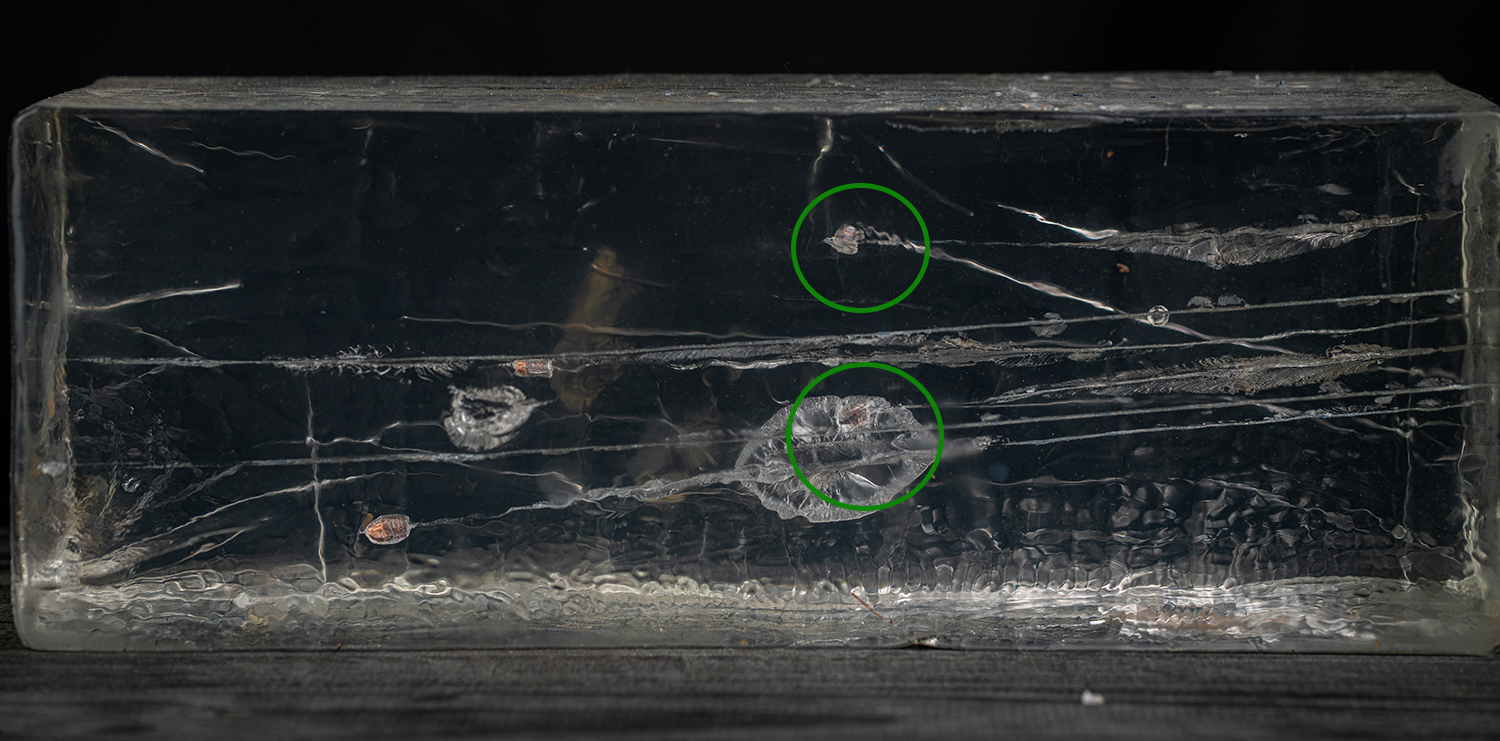
Our CCI mini mag ammo came to a rest less than half-way through the gelatin block. The bullets, fired from a Glock 44 pistol are circled in green.
Muzzle velocity: 1,260 fps
Muzzle energy: 127 ft lbs
At the bare minimum, your 22 LR self-defense should look like this. First off, CCI is one of the best American rimfire ammo manufacturers. Their cartridges are reliable and accurate. Second, this round’s muzzle velocity is supersonic (albeit out of a rifle barrel). Finally, its copper-plated hollow point bullet (CPHP) can expand as it penetrates soft tissue, thus enabling it to transfer more of its energy outward while simultaneously leaving a wider wound channel in its wake.
A lead round nose (LRN) or copper-plated round nose (CPRN) bullet will not expand as it penetrates its target. A solid point bullet can still reach and damage a threat’s vital organs, and it can also deform and tumble within soft tissue to create a wider wound channel, but its terminal ballistics are otherwise not suitable for personal protection.
CCI Stinger 32gr CPHP
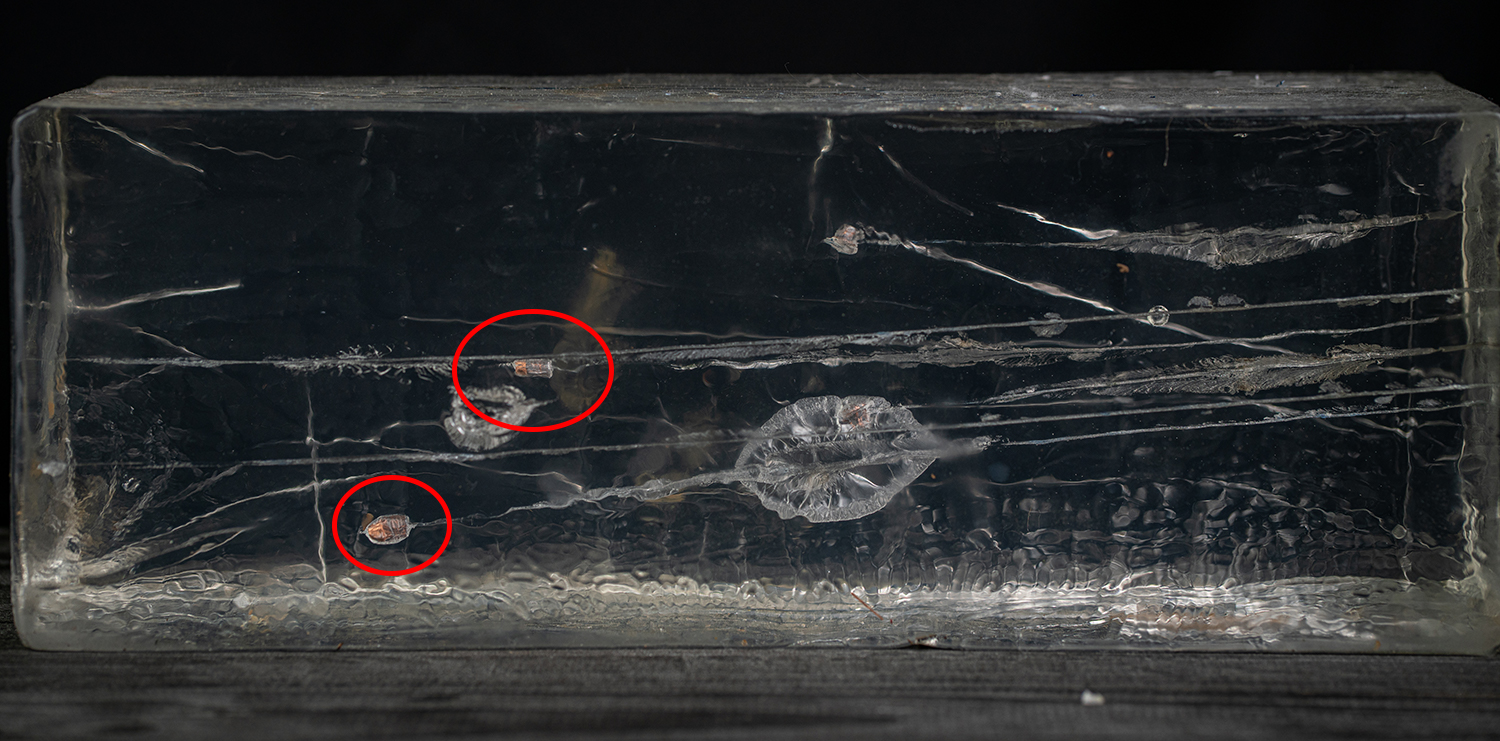
The CCI Stinger ammo came to a rest about 11″ into the gel block. The bullets, fired from a Glock 44, are circled in red.
Muzzle velocity: 1,640 fps
Muzzle energy: 191 ft lbs
The CCI Stinger has the hollow point bullet we generally want for a self-defense cartridge. It also has an exceptionally high muzzle velocity, a feat which it largely owes to its low-inertia 32 grain projectile. In addition to promoting a flatter trajectory, so fast-moving a bullet strikes its target with greater kinetic energy. The CCI Stinger’s muzzle energy is so high that it falls just short of the minimum threshold recommended for personal protection (when fired from a rifle; a pistol’s muzzle energy is necessarily lower, but this round’s advantage will still be apparent).
Buy CCI Stinger 22LR ammo here.
CCI 32 Grain Segmented Hollow Point 22 LR
Muzzle velocity: 1,640 fps
Muzzle energy: 191 ft lbs
This cartridge features a segmented hollow point (SHP) bullet. Like a conventional HP, the SHP does expand outward when it begins penetrating soft tissue. But rather than remain intact, it breaks apart into three equally-sized fragments. Each of these tracks its own individual wound channel through the target, which is as unpleasant for said target as it sounds. This round’s wound channel may not be very deep, but whichever parts of the body its fragments do impact will probably be out of commission.
Find CCI 32 Grain 22LR segmented hollow point ammo for sale here.
Winchester Silvertip 37gr SHP
Muzzle velocity: 1,060 fps
Muzzle energy: 92 ft lbs
22LR37HPw22lrstWin-50
Winchester Silvertip 22 LR has essentially the same type of SHP bullet as the CCI round above. It’s also optimized for short-barrel firearms, and despite its apparently low muzzle energy it is still powerful by 22 LR standards. Because Winchester specifically markets this ammo for self-defense applications, they report its muzzle energy with a pistol. It’s a more accurate representation of what the 22 LR can do out of a short barrel!
Federal Punch 29gr FN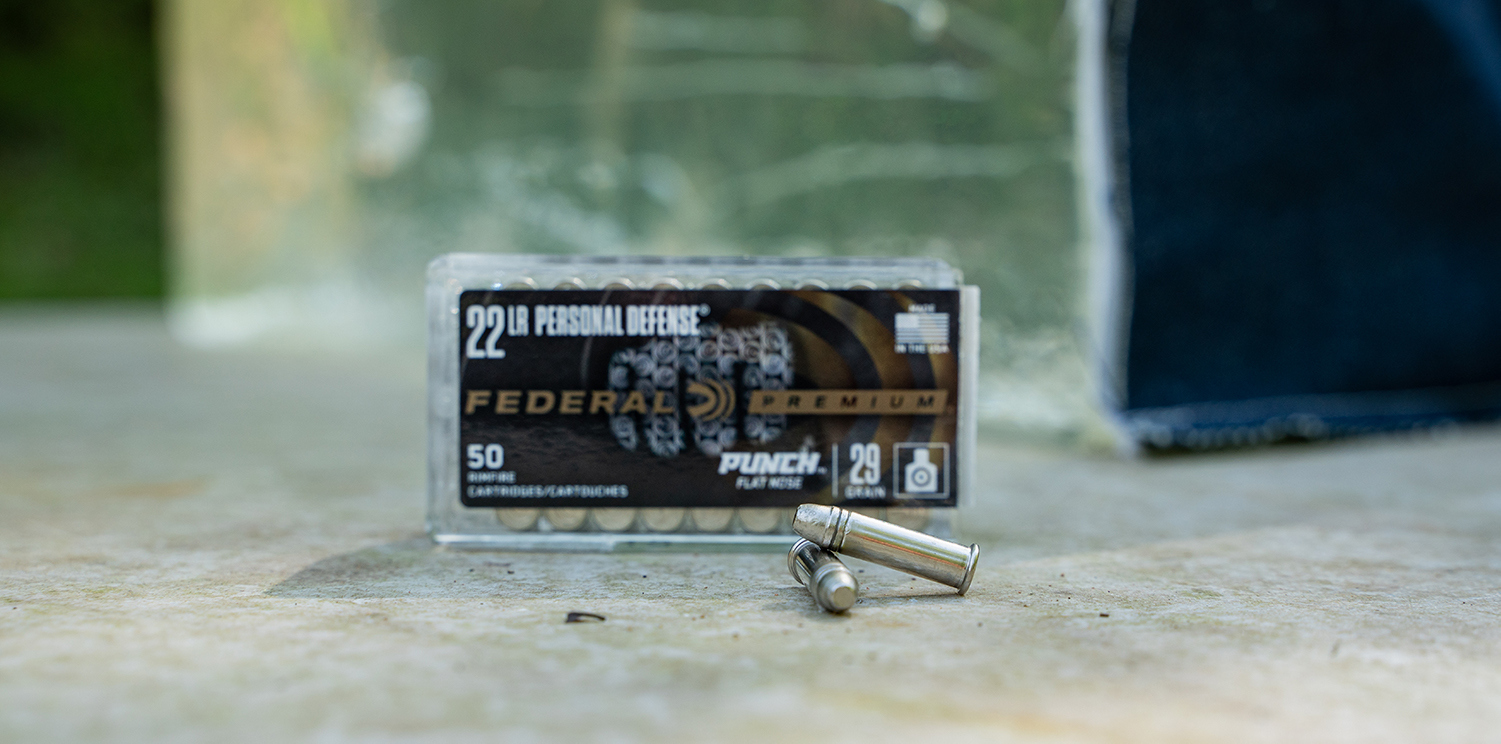
Muzzle velocity: 1,080 fps (also recorded with a pistol-length barrel)
Muzzle energy: 75 ft lbs
A 22 LR bullet doesn’t necessarily have to expand to be suitable for self-defense. The Federal Punch 22 LR cartridge features a non-expanding flat nose (FN) bullet, which is designed solely for deeper penetration. The FN bullet pierces through clothing and soft tissue very efficiently, thus increasing its chances of reaching all the way to a vital organ.

Our Federal Punch trial ended with the bullets traveling all the way through the gel block. We used a Glock 44 pistol for this test.
Essentially, this is a round which acknowledges the 22 LR’s shortcomings and attempts to compensate for them by focusing all of its energy on creating the deepest possible wound channel – and nothing else.

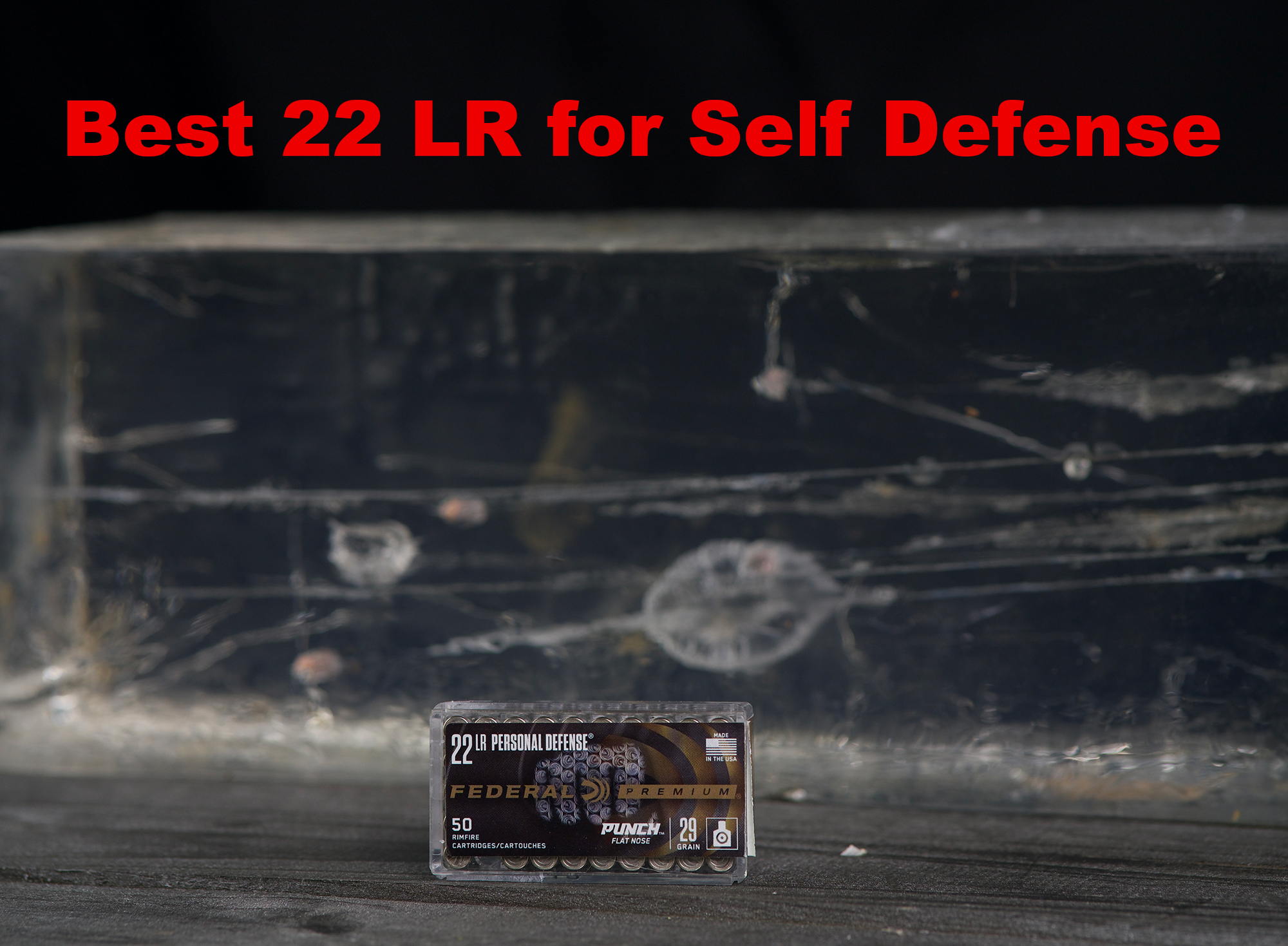
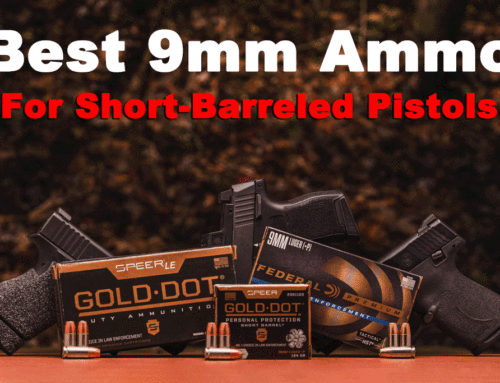
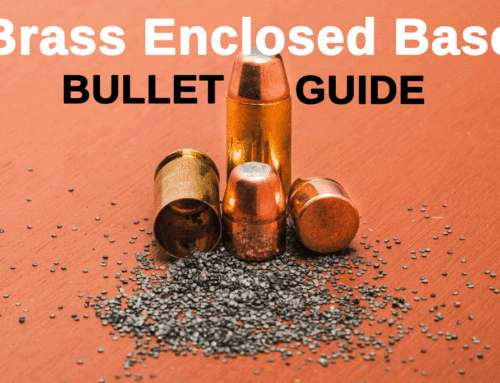
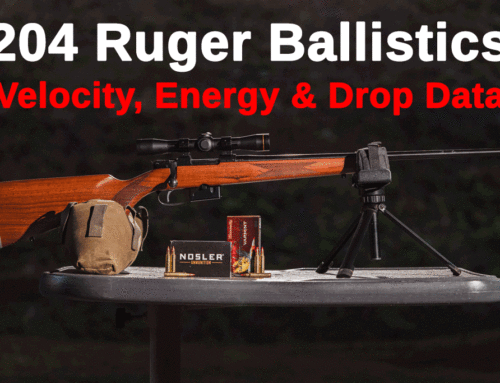
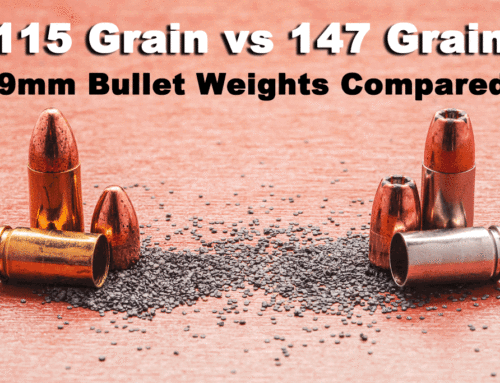
Hello,
Thanks for the report. Can you tell me which 22 ammo is the best chance for self defense in less than 30 feets ? I think more than 30 feets is better to avoid and go away.
Pedro – we definitely agree with you. At more than 30′ using a 22LR for self-defense is a tall task. At close range, the CCI Stinger (https://www.ammoforsale.com/500-rounds-of-discount-32gr-cphp-22-lr-ammo-for-sale-by-cci) and the CCI CPHP (https://www.ammoforsale.com/cci-22-lr-ammo-for-sale-22lr36cphpccimm-100) are both about as good of options as you’ll find.
A 22 is a great gun most anything and for longer range than you might ever think. Since it is accurate and no real recoil it’s pretty easy to hit most targets in the head for a sure kill with the least chance of it going much further. I’ve seen deer run for miles after shot in the heart but never seen one go very far shot in the head. So it should be a great self defense gun and at 100 yards or more no problem. If you are any good with it.
Has there been any testing on the ELEY or LAPUA brands of ammunition? Just thinking, these are Olympic grade 22LR manufacturers. I would imagine that one of their offerings, hunting or pest-control, might be useable for self-defense. Their priming procedures seem to be touted for very high reliability. I know much has been written on using the rimfire for self-defense, but age, arthritis, and injury are moving me toward that end.
We haven’t seen any testing done on these but both Eley and Lapua are well-respected in the shooting community. We’ve fired plenty of ELey and been fairly impressed with it.
With some of the new .40 grain .22 Caliber rounds approaching 1750 fps and muzzle energy over 200 ft lbs. , we have some very good stopping rounds if shot placement is good. Head shots and neck shots being the better one can be considered in self defense.